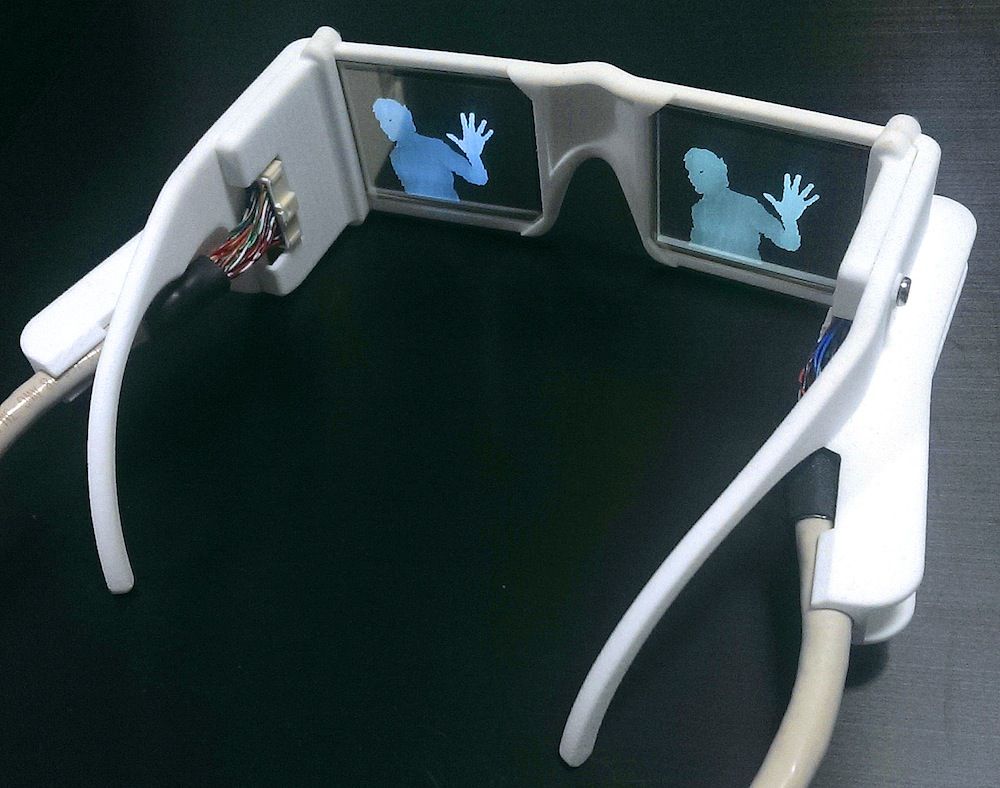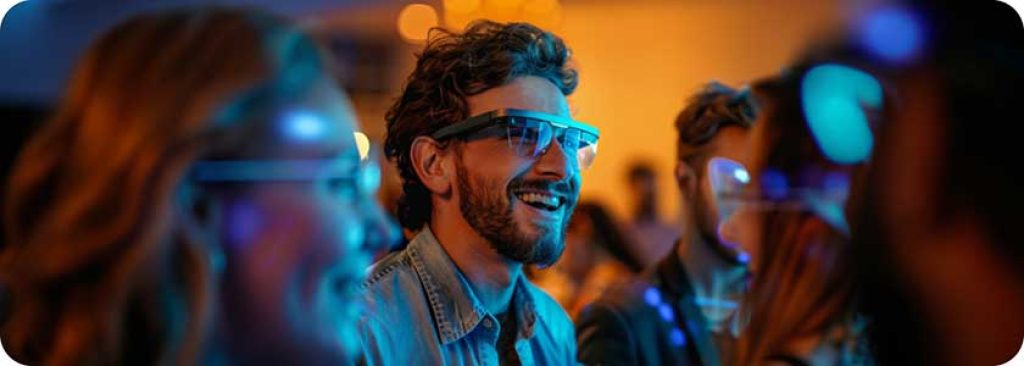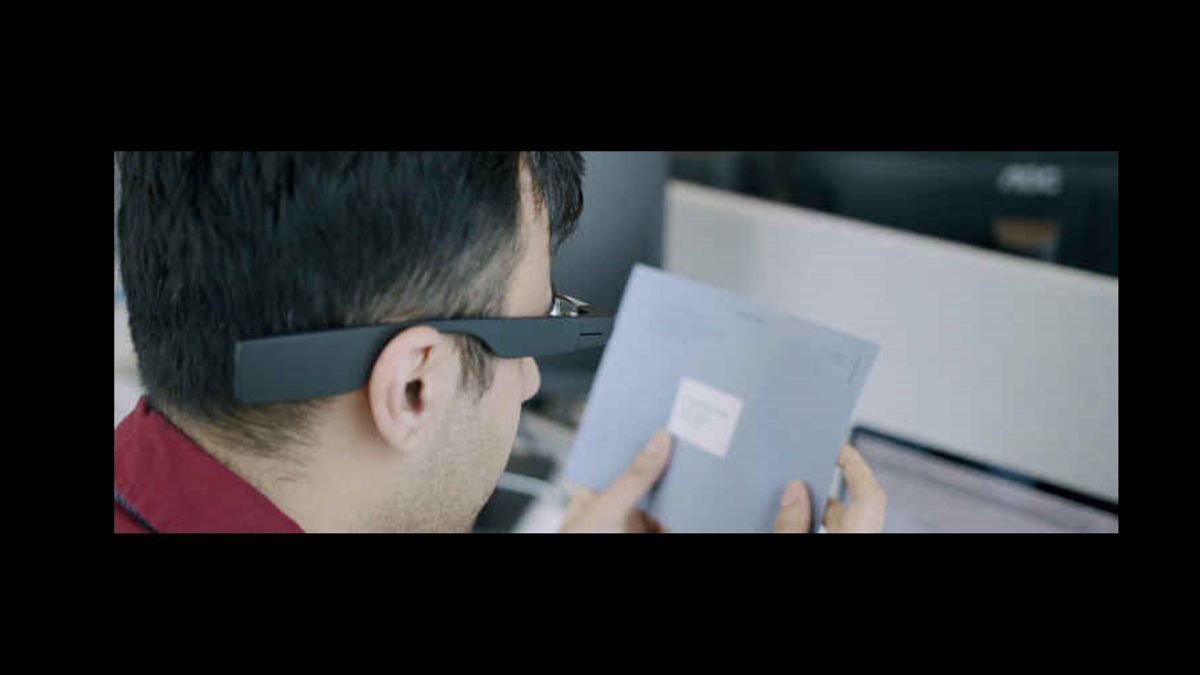How Smart Glasses for the Visually Impaired Are Revolutionizing Daily Life
Discover Advanced Assistive Instruments for Individuals With Aesthetic Problems
The landscape of assistive modern technology for people with aesthetic impairments is developing swiftly, providing a variety of ingenious gadgets that enhance autonomy and engagement. From clever glasses that flawlessly combine visual input with auditory support to innovative navigating applications that redefine spatial understanding, these tools are reshaping opportunities.
Smart Glasses Innovations
Smart glasses represent a substantial development in assistive modern technology for individuals with visual impairments. These cutting-edge gadgets incorporate various functions developed to enhance the customer's communication with their environment. Outfitted with sensing units and cams, wise glasses can record real-time visual info, which is then processed and communicated to the individual through audio responses or haptic feelings. This functionality allows people to receive immediate descriptions of their surroundings, boosting their ability to browse and involve with the world.
In addition, developments in expert system have actually better boosted the abilities of wise glasses. Artificial intelligence formulas can identify faces, reviewed text, and recognize items, making them indispensable tools for day-to-day tasks. Individuals can obtain acoustic hints that supply context about their environment, cultivating self-reliance and self-confidence.
Additionally, the ergonomic layout and lightweight nature of several smart glasses make them ideal for long term usage, ensuring comfort while improving performance. As these devices remain to advance, they hold the prospective to reinvent the way individuals with visual problems experience their day-to-days live, linking the gap in between access and innovation. The ongoing r & d in this field guarantee to broaden the possibilities for clever glasses, making them an important part of contemporary assistive tools.
Navigation Application and Tools
Various navigation applications and tools have actually arised as vital resources for individuals with aesthetic problems, considerably boosting their capability to go across unfamiliar environments. These technologies take advantage of general practitioner functionality, audio signs, and real-time information to offer customers with precise navigation support.
One noticeable instance is the Aira app, which connects users to qualified agents who can supply visual descriptions of surroundings and navigating guidance through a real-time video feed. This solution enhances the customer's spatial recognition and confidence while navigating. An additional noteworthy tool is Seeing Eye GPS, which supplies voice-guided navigating and factors of interest, enabling customers to access vital info regarding their environments.

As innovation remains to breakthrough, the growth of a lot more innovative navigation devices guarantees to additional encourage people with visual impairments, assisting in smooth mobility and assimilation into diverse environments. Such technologies contribute in promoting an extra comprehensive society.
Braille Innovation Developments
In recent times, advancements in Braille innovation have actually significantly changed how people with aesthetic impairments accessibility information and engage with the globe around them. The development of mobile Braille displays has reinvented reading by allowing individuals to link wirelessly to smartphones, tablets, and computers. These gadgets transform text into Braille in real-time, making it possible for smooth communication with electronic content.
Moreover, cutting-edge Braille printers have arised, enhancing the production of tactile materials. Modern embossers are faster and a lot more effective, allowing for the rapid development of Braille files and instructional materials. This efficiency reduces the time and expense related to generating Braille sources, making them extra available to organizations and institutions.
In addition, the combination of Braille with other modern technologies, such as man-made intelligence and artificial intelligence, has opened new methods for personalized discovering experiences. Voice recognition and synthesis technologies can match Braille, offering a comprehensive method to information circulation.
As the demand for comprehensive education and work environment environments expands, these technical developments play a critical function in empowering people with visual disabilities, guaranteeing they have equal access to info and chances in various elements of life.
Wearable Instruments for Self-reliance
An expanding variety of wearable devices is enhancing freedom for individuals with aesthetic disabilities, supplying innovative options that improve navigation and everyday living. Braille displays and notetakers. These devices utilize innovative modern technologies to offer real-time feedback and assistance, advertising autonomy in numerous atmospheres

Wearable modern technology likewise consists of smartwatches that can be programmed with accessibility functions, making it possible for users to get alerts, track their places, and even ask for support with the touch of a switch. In addition, some gadgets integrate expert system to analyze the setting, offering audio summaries of close-by items or people.
Voice-Activated Assistive Solutions
Leveraging voice-activated assistive options has changed the landscape of support for people with visual impairments, supplying hands-free communication and access to a range of jobs. These technologies use all-natural language processing and man-made intelligence to allow users to carry out everyday tasks with easy voice commands.

Moreover, current improvements in voice recognition accuracy have actually boosted the user experience substantially, accommodating diverse accents and speech patterns. This inclusivity makes sure that more individuals can benefit from these modern technologies, fostering a better feeling of freedom.
Verdict
Finally, the advancement of advanced assistive tools dramatically improves the self-reliance and quality of life for people with aesthetic impairments. Advancements such as wise glasses, navigating apps, Braille innovation, wearable devices, and voice-activated options jointly foster a more comprehensive setting. These modern technologies equip users to browse their environments with confidence and engage even more completely with the world, eventually promoting better ease of access and level playing fields for people facing aesthetic obstacles.
The landscape of assistive modern technology for individuals with visual disabilities is progressing swiftly, offering a variety of innovative devices that improve autonomy and involvement.Smart glasses stand for a considerable advancement in assistive technology for people with aesthetic disabilities. As these gadgets continue to advance, they hold the prospective to reinvent the means individuals with visual problems experience their everyday lives, connecting the space in between access and innovation.In recent years, developments in Braille modern technology have actually substantially transformed how people with visual impairments accessibility details and additional hints involve with the globe around them. These technologies encourage individuals to browse their environments with confidence and engage more fully with the globe, inevitably promoting higher ease of access and equal opportunities for individuals dealing with aesthetic challenges.